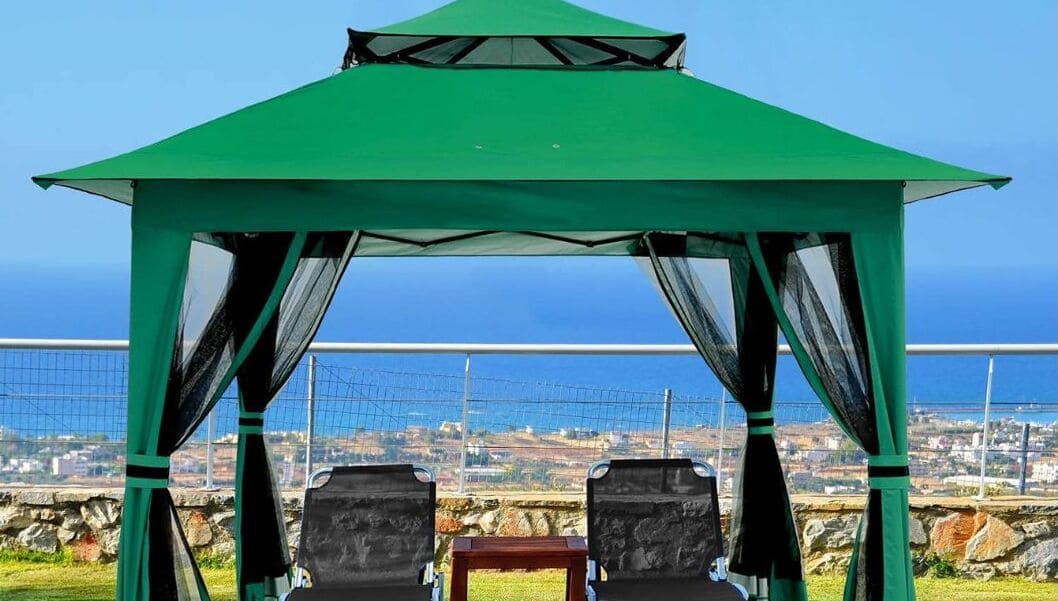Pop-up gazebos are a popular choice for outdoor gatherings, as they provide shade and shelter from the sun and rain. However, while they may be easy to set up and take down, they are often not entirely waterproof.
This can lead to a damp and uncomfortable experience for those inside the gazebo, especially during heavy rain showers.
Fortunately, there are several simple steps you can take to make your pop-up gazebo more waterproof.
By taking a few precautions and investing in some additional accessories, you can ensure that your gazebo stays dry and comfortable, no matter what the weather brings.
In this article, we will provide you with some practical tips and tricks for making your pop-up gazebo more waterproof.
From applying waterproof coatings to investing in quality accessories, we will guide you through the process of keeping your gazebo dry and comfortable, so that you can enjoy your outdoor events with peace of mind.
How to make pop up Gazebo more waterproof: To make a pop-up gazebo more waterproof, it’s essential to identify the problem areas and prepare the gazebo’s surface for waterproofing solutions.
These include waterproof sprays and coatings, seam sealers and tape, gazebo covers and canopies, and rain gutters and diverters. Proper application and maintenance of these solutions can help prolong the life of the gazebo and keep it dry during inclement weather.
How To make pop up gazebo more waterproof

If you own a pop-up gazebo, you know how enjoyable it can be to spend time outdoors while being protected from the sun and rain. However, if your gazebo is not properly waterproofed, it can quickly turn into an unpleasant experience.
Fortunately, with a few simple steps, you can make your pop-up gazebo more waterproof and prevent leaks and water damage.
Start by choosing the right materials, such as a waterproof canopy or cover, sealant or waterproofing spray, and waterproof tape or sealant strips.
Next, prepare the gazebo by cleaning it thoroughly and checking for any areas that may be prone to leaks or water damage.
Test the gazebo for waterproofing by simulating rain with a hose or spray bottle and checking for leaks. Finally, maintain and care for your pop-up gazebo by regularly cleaning it and reapplying waterproofing materials as needed.
Choose the right materials
When it comes to making your pop-up gazebo more waterproof, choosing the right materials is crucial. From the canopy to the sealant, each component plays a vital role in keeping your gazebo dry and comfortable.
we will discuss the key materials you should consider to make your pop-up gazebo more waterproof.
Waterproof Canopy or Cover
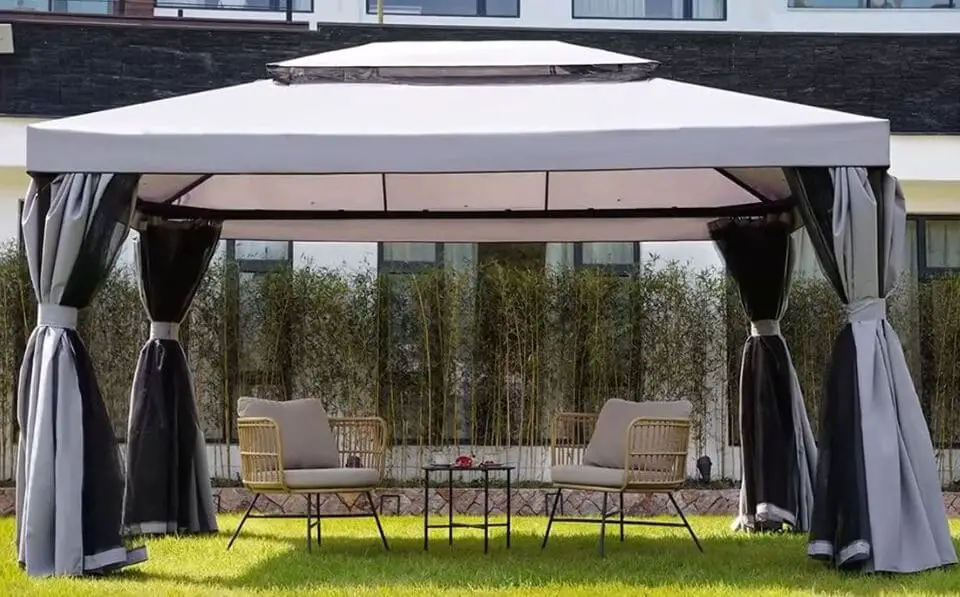
The first step in making your pop-up gazebo more waterproof is to invest in a waterproof canopy or cover.
While most gazebos come with a canopy, not all canopies are waterproof. If your gazebo’s canopy is not waterproof, you may want to consider replacing it with a waterproof one.
Waterproof canopies are made from materials such as polyester, nylon, or PVC, which are coated with a waterproofing agent.
These materials are designed to repel water and prevent it from seeping through the fabric. Some waterproof canopies also come with additional features such as reinforced stitching or UV protection.
When choosing a waterproof canopy or cover, there are several factors to consider. Firstly, you should look for a material that is durable and resistant to tearing, fading, and mildew. Additionally, you should choose a canopy that fits your gazebo’s frame size and shape.
It’s important to measure your gazebo’s frame before purchasing a new canopy to ensure a proper fit.
A sealant or Waterproofing Spray
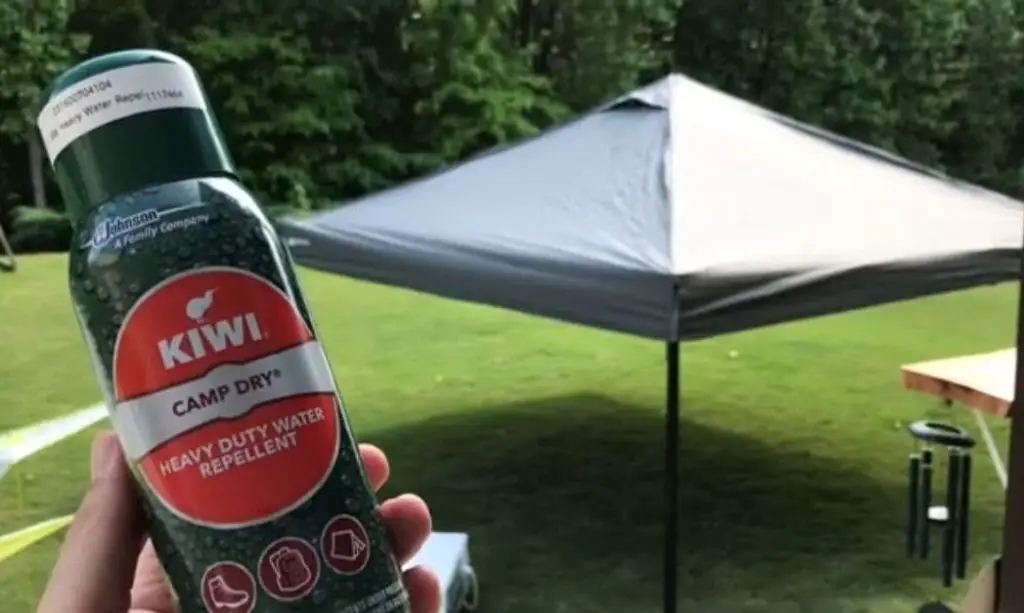
Another material that can help make your pop-up gazebo more waterproof is a sealant or waterproofing spray.
Sealants are designed to fill gaps and cracks in your gazebo’s frame, while waterproofing sprays are used to coat the fabric of your canopy or cover.
When choosing a sealant, it’s important to select one that is compatible with your gazebo’s material.
For example, if your gazebo is made from metal, you should choose a sealant designed for metal surfaces. Similarly, if your gazebo is made from wood, you should choose a sealant designed for wooden surfaces.
Waterproofing sprays are typically made from silicone, wax, or oil-based compounds, and are designed to repel water from the surface of your gazebo’s fabric.
When using a waterproofing spray, it’s important to follow the manufacturer’s instructions carefully. You should also apply the spray in a well-ventilated area and avoid spraying too close to the fabric to prevent over-saturation.
Waterproof Tape or Sealant Strips
In addition to sealant and waterproofing spray, waterproof tape or sealant strips can also be used to seal gaps and prevent water from seeping through your gazebo’s frame.
Waterproof tape is a strong adhesive tape that is designed to create a watertight seal.
Sealant strips, on the other hand, are self-adhesive strips that are applied to the frame of your gazebo to prevent water from entering.
When using waterproof tape or sealant strips, it’s important to ensure that the surface is clean and dry before applying the tape or strip. You should also press the tape or strip firmly onto the surface to create a secure seal.
Prepare the gazebo for waterproofing
Before you begin waterproofing your pop-up gazebo, it’s important to prepare the gazebo to ensure that the waterproofing materials adhere properly and effectively.
we will discuss the key steps involved in preparing your gazebo for waterproofing.
Clean the Gazebo and Remove Any Debris or Dirt
The first step in preparing your gazebo for waterproofing is to clean it thoroughly. This involves removing any debris or dirt that may have accumulated on the gazebo’s surface, including leaves, twigs, and other outdoor debris.
To clean your gazebo, you can use a broom or a soft-bristled brush to remove any loose debris. For more stubborn dirt and grime, you can use a gentle soap and water solution to scrub the gazebo’s surface. Be sure to rinse the gazebo thoroughly with clean water to remove any soap residue.
Cleaning your gazebo not only helps to remove any potential barriers to the waterproofing process but also helps to maintain the overall condition of the gazebo.
Ensure That the Gazebo is Dry Before Applying Any Waterproofing Materials
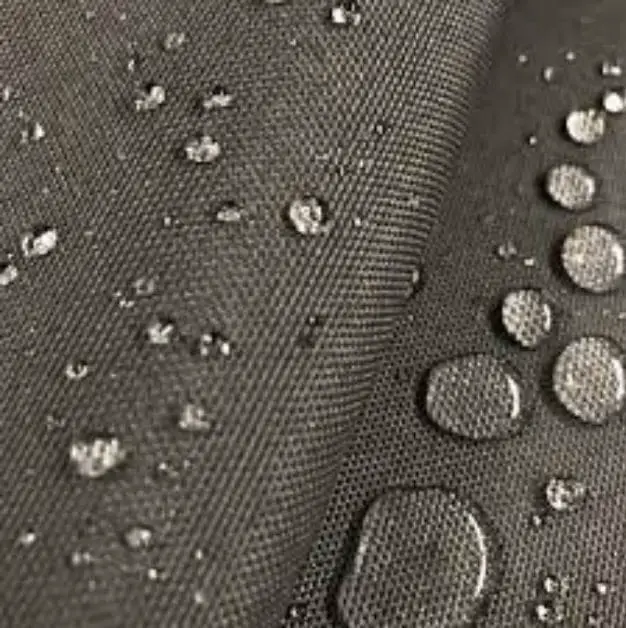
After cleaning your gazebo, it’s important to ensure that it is completely dry before applying any waterproofing materials.
This is because moisture can interfere with the effectiveness of waterproofing materials and prevent them from adhering to the gazebo’s surface.
To dry your gazebo, you can use a clean towel or let it air dry in the sun. It’s important to ensure that the gazebo is completely dry before proceeding with waterproofing to avoid any water damage or ineffective application.
Check for Any Areas That May Be Prone to Leaks or Water Damage
Before applying any waterproofing materials, it’s important to inspect your gazebo for any areas that may be prone to leaks or water damage. This will help you to identify areas that may require extra attention during the waterproofing process.
Some areas that may be prone to leaks or water damage include the corners of the gazebo, the edges of the canopy or cover, and any areas where the frame may be damaged or weakened.
To inspect your gazebo, you can visually examine the surface of the gazebo and feel for any areas that may be damp or wet.
If you identify any areas that may require extra attention, you can mark them with a pen or a piece of tape to ensure that they are properly addressed during the waterproofing process.
Apply waterproofing materials
When it comes to making a pop-up gazebo more waterproof, applying waterproofing materials is a crucial step.
In this guide, we will discuss how to apply waterproof sealant or spray, waterproof tape or sealant strips, and a second coat of sealant or spray to ensure complete coverage.
Apply waterproof sealant or spray to the canopy or cover
The first step to waterproofing a pop-up gazebo is to apply a waterproof sealant or spray to the canopy or cover. This is important because it creates a barrier between the outside elements and the inside of the gazebo. To apply waterproof sealant or spray, follow these steps:
Step 1: Clean the surface of the canopy or cover it thoroughly. This will help the sealant or spray adhere to the surface better.
Step 2: Choose a waterproof sealant or spray that is specifically designed for outdoor use and is safe for use on the material of your gazebo canopy or cover. You can find these at most hardware or outdoor supply stores.
Step 3: Apply the sealant or spray evenly to the surface of the canopy or cover. Use a paintbrush, roller, or spray bottle, depending on the type of sealant or spray you have chosen.
Step 4: Allow the sealant or spray to dry completely before using the gazebo. This can take anywhere from a few hours to a full day, depending on the product and the weather conditions.
Use waterproof tape or sealant strips to cover any seams or areas that may be prone to leaks
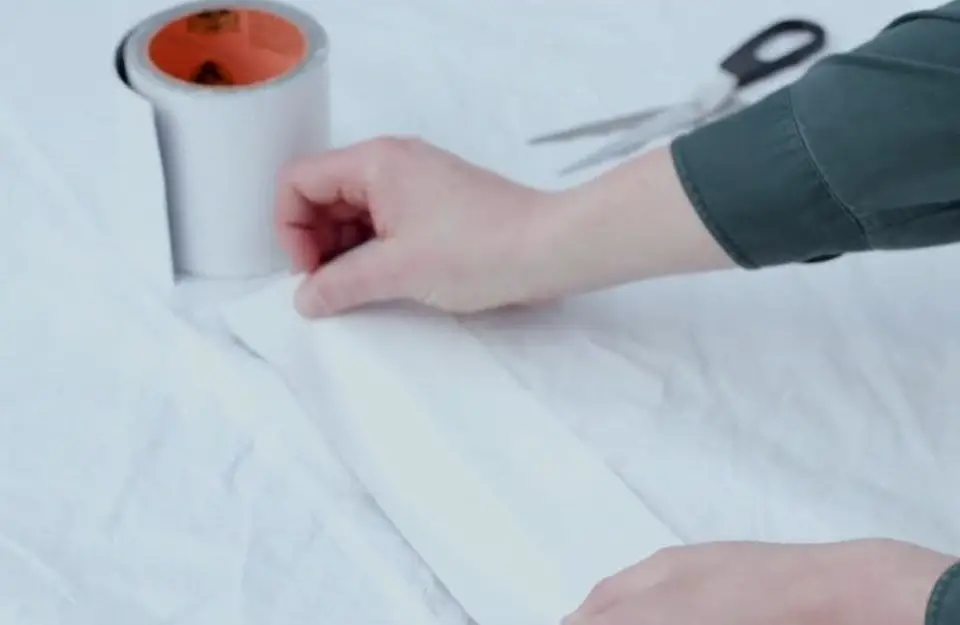
Even after applying waterproof sealant or spray to the canopy or cover, there may still be areas that are prone to leaks, such as seams or holes. To cover these areas, you can use waterproof tape or sealant strips. Here’s how:
Step 1: Clean the surface of the area you want to cover with waterproof tape or sealant strips. Make sure it is dry and free of debris.
Step 2: Choose a waterproof tape or sealant strip that is specifically designed for outdoor use and is safe for use on the material of your gazebo canopy or cover. You can find these at most hardware or outdoor supply stores.
Step 3: Cut the tape or strip to the appropriate length and shape to cover the area you want to seal.
Step 4: Apply the tape or strip to the surface, making sure it is firmly pressed down and covers the area completely.
Step 5: Allow the tape or strip to set for the recommended time, usually 24 hours or more, before using the gazebo.
Apply a second coat of sealant or spray to ensure complete coverage
To ensure complete coverage and maximum protection against water leaks, it’s recommended to apply a second coat of sealant or spray to the canopy or cover. Here’s how:
Step 1: After the first coat of sealant or spray has dried completely, inspect the surface of the canopy or cover for any missed spots or areas that may need extra protection.
Step 2: Choose a waterproof sealant or spray that is the same as or compatible with the first coat you applied.
Step 3: Apply the second coat of sealant or spray evenly to the surface of the canopy or cover. Use the same application method as the first coat.
Step 4: Allow the second coat of sealant or spray to dry completely before using the gazebo. This can take anywhere from a few hours to a full day, depending on the product and the weather conditions.
By following these steps and applying waterproofing materials to your pop-up gazebo, you can create a dry and comfortable space even during inclement weather.
However, it’s important to remember that no solution is foolproof, and regular maintenance and inspection are necessary to keep your gazebo on top
Test the gazebo for waterproofing
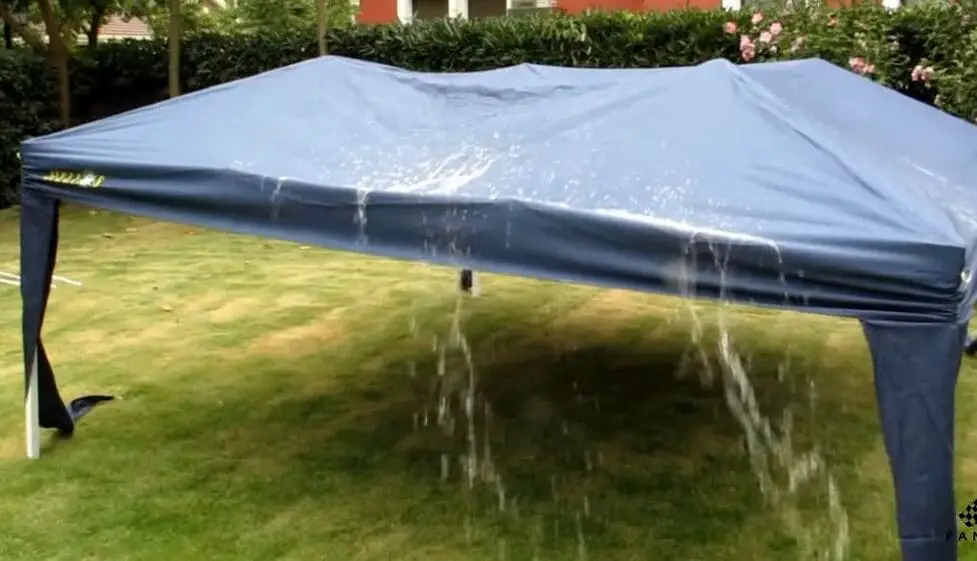
After preparing your pop-up gazebo for waterproofing, the next step is to test the effectiveness of your waterproofing materials.
This will help you identify any areas that may require additional waterproofing and ensure that your gazebo is properly protected from the elements. we will discuss the key steps involved in testing your gazebo for waterproofing.
Use a Hose or Spray Bottle to Simulate Rain and Test for Leaks
To test the effectiveness of your waterproofing materials, you can simulate rain by using a hose or a spray bottle filled with water. This will help you identify any areas where water may be leaking through the gazebo’s canopy or cover.
Start by spraying the gazebo’s canopy or covering it with a light mist of water. Then gradually increase the intensity of the spray until the gazebo is receiving a steady flow of water, similar to a light rain shower.
As the water flows over the gazebo’s surface, check for any areas where water may be leaking through.
This may include the corners of the gazebo, the edges of the canopy or cover, and any areas where the frame may be damaged or weakened.
If you identify any leaks or areas where water is penetrating the gazebo, you can mark them with a pen or a piece of tape to ensure that they are properly addressed during the waterproofing process.
Check for Any Areas That May Need Additional Waterproofing
After testing the gazebo for leaks, it’s important to check for any areas that may require additional waterproofing. This may include areas where water is pooling or areas that may be more prone to water damage.
To identify areas that may require additional waterproofing, you can visually examine the gazebo’s surface and feel for any areas that may be damp or wet.
If you identify any areas that require additional waterproofing, you can apply a sealant or waterproofing spray to those areas to ensure that they are properly protected.
Maintenance and care
Proper maintenance and care of your pop-up gazebo are essential to ensure its longevity and the effectiveness of its waterproofing.
Over time, dirt and debris can accumulate on the gazebo, which can affect the performance of the waterproofing materials. In this article, we will discuss some key tips for maintaining and caring for your pop-up gazebo.
Regularly Clean and Maintain the Gazebo
One of the most important steps in maintaining your pop-up gazebo is to regularly clean and maintain it.
This will help to prevent dirt and debris from affecting the waterproofing and ensure that the gazebo remains in good condition for years to come.
To clean your pop-up gazebo, start by removing any loose debris or dirt using a soft-bristled brush or broom.
Be sure to remove any leaves, twigs, or other debris from the corners and edges of the gazebo, as these areas are more prone to water damage and leaks.
Next, use a mild detergent and a soft cloth to clean the gazebo’s surface. Be sure to use a non-abrasive detergent to avoid damaging the waterproofing materials.
Rinse the gazebo thoroughly with water and allow it to dry completely before using it again.
Reapply Waterproofing Materials as Needed
Over time, the effectiveness of your gazebo’s waterproofing materials may diminish due to exposure to the elements or extended periods of use.
To ensure that your gazebo remains waterproof, it’s important to reapply waterproofing materials as needed.
This may involve applying a waterproofing spray or sealant to the gazebo’s canopy or cover. Be sure to follow the manufacturer’s instructions carefully and apply the waterproofing materials evenly to ensure full coverage.
It’s also important to regularly check for any areas of the gazebo that may be prone to leaks or water damage. This may include the corners and edges of the gazebo, as well as any areas where the frame may be damaged or weakened.
If you identify any areas that require additional waterproofing, be sure to apply the appropriate materials to ensure that they are properly protected.
FAQs
Q.1 What is the best material for a waterproof gazebo?
The best material for a waterproof gazebo is a canopy or cover made from waterproof polyester or polyurethane-coated fabric. These materials are durable and effective at repelling water.
Q.2 How often should I reapply waterproofing materials to my pop-up gazebo?
The frequency of reapplying waterproofing materials to your pop-up gazebo will depend on how often you use it and how exposed it is to the elements. As a general rule, it’s a good idea to check the waterproofing every six months and reapply materials as needed.
Q.3 Can I use any type of waterproofing spray or sealant on my pop-up gazebo?
It’s important to use waterproofing sprays or sealants that are specifically designed for use on outdoor fabrics, such as polyester or polyurethane-coated materials. Be sure to read the manufacturer’s instructions carefully and apply the materials evenly to ensure full coverage.
Q.4 How do I know if my pop-up gazebo is waterproof?
You can test the waterproofing of your pop-up gazebo by using a hose or spray bottle to simulate rain and checking for leaks or areas where water may be penetrating the canopy or cover. If you notice any leaks or areas of water damage, it may be time to reapply waterproofing materials.
Q.5 Can I use a pressure washer to clean my pop-up gazebo?
It’s not recommended to use a pressure washer to clean your pop-up gazebo, as this can damage the waterproofing materials and cause leaks or water damage. Instead, use a soft-bristled brush or broom and mild detergent to clean the gazebo’s surface.
Conclusion
In conclusion, waterproofing your pop-up gazebo is a simple yet important task that can greatly enhance your outdoor experience.
By choosing the right materials and preparing the gazebo properly, you can prevent leaks and water damage.
Applying waterproofing materials such as sealant, spray, or tape can further protect your gazebo from the elements.
Testing the gazebo for waterproofing and regularly maintaining it will ensure it remains dry and in good condition.
Whether you are using your gazebo for a backyard party, a camping trip, or just relaxing outside, taking the time to make it waterproof will make your time spent in it more enjoyable.
With these tips and tricks, you can make your pop-up gazebo more waterproof and enjoy the outdoors with peace of mind.
We hope that after reading this detailed guide, you now know how to make your pop-up gazebo more waterproof. If you still have any questions, please feel free to leave a comment below.

